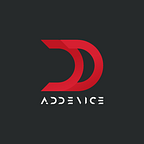Online communication has become a new normal these days. Communication software like WhatsApp, Viber, Telegram, and other tools that are an integral part of our lifestyle.
As of May 2020, 2.52 billion people use chat apps regularly and this number keeps growing and is expected to reach 3 billion in 2022.
FEATURE-SET INCLUDED INTO A MESSAGING APP
These days, it is necessary to include the must-have features that would make the system work as well as apply some sort of innovation to make the app appealing to the target users.
Here we list those messaging app functions that the app cannot exist without.
1. User authorization
2. Contact importing
3. Messaging functionality
4. Sharing of photos and files
5. Location tracking
6. Notifications
7. Synchronization across devices
8. Support video and audio content
9. High-end encryption
10. Video and audio calls
TECH STACK TO BUILD YOUR MESSAGING APP
Depending on your product’s goals and functionality you should understand whether to create a cross-platform or native messaging app. The difference lies in the app availability of the app across the majority of platforms simultaneously or individually for each operating system
Both options have their pros and cons. Native app development ensures higher system performance, stability, security but requires more investments.
Server-side of software can be coded in PHP, Ruby, Erlang, and similar. Your software development vendor should advise you of what is more suitable to use in your case.
Also, one of the most common product architecture is a software bundle of LAMP. Linux as the operating system, Apache- web server, MySQL database, PHP as a back-end language.
Alternatively, you can use a PostgreSQL database, Nginx web server, Nodejs, Ruby, or JavaScript for the backend development.
It is also necessary to use distinct services and libraries, namely:
- Amazon services — for data storing
- Socket.io — library for real-time communication between a browser and server
- Social media integration- Facebook, Instagram, Twitter, etc.
- Analytical tools- Flurry, Google Analytics, Firebase, MixPanel, etc.
- Maps & Navigation- Google Maps, Google Places
- SMS services- Twilio
- Email marketing — MailChimp, Elastic emails
- Payment gateways- Braintree, Stripe, PayPal, etc.
- Push notifications- APNS (iOS), FCM (Android)
A general idea is to go for open-source technologies, which prevent building everything from scratch. Rather it is possible to use existing well-proven libraries and frameworks.
When selecting a tech stack for your messaging app, put users and their experience in a priority, as well as consider speed, performance, and security of the chat app.
TECHNOLOGIES USED TO BUILD A WHATSAPP MESSAGING APP
Operating system FreeBSD is used in this app. Its developers believe that the Linux system is more bug-creating, which is a rather debatable statement.
Initially, the system used XMPP (Extensive Messaging, Presence Protocol) to manage one to one and group communications. Further, the team created the internal protocol to support communication with end-to-end encryption.
WhatsApp uses YAWS (Yet Another Web Server) for data storing and HTML5 WebSockets to create a solid connection between a server and messenger.
The system uses LYCE/LYME architecture consisting of the open-source solutions to develop highly available and dynamic pages.
- Operating system- Linux
- Web server — Yaws
- Databases — Mnesia, CouchDB
- Programming language- Erlang
To note, Elixir programming and its Phoenix framework are great to utilize for complex and high load projects. These technologies ensure smooth system operation, great efficiency, and the ability to handle lots of traffic.
TECH STACK WITHIN THE TELEGRAM APP
Telegram is one of the greatest messaging apps with the greatest protection and smooth performance. As far as it is known, the messenger was coded with the following technologies:
- iOS app — build by utilizing Objective C and partly Swift
- Android app — created with Java programming language
- Windows Phone app — uses C#
- Web platform — uses Javascript and Node.js
- Mac app — is developed with Objective C
CHAT APP MONETIZATION STRATEGIES
We have an answer for you with a few options to build revenue streams in this app type. These strategies include:
- advertising — these are multiple ways to include ads inside the messaging application. This can be a banner ad, pop up ad, native ad, and similar. Viber messenger uses this strategy and shows targeted ads and messages and earns millions.
- in-app purchases — this model implies users to pay for some advanced app feature, access specific content, remove the ads in the messaging app, the possibility to purchase sticker packs, or games. The latter option is used in the LINE chat app, where users play just right in the messenger.
- in-app payments — corresponds to the typical monetization strategy, where users make payments inside chat applications.
- integration of a chatbot — this is an advance monetization possibility once your app gets user interest and base. This allows you to gain revenue from CTR (click-through rate) by providing relevant recommendations.
- sponsorship — in this model, revenue is generated via the in-app sponsorship to create brand awareness. This method is best to utilize once you have enough pull of app users.
- pay per download — you may use this method if you a sure to provide a unique and new app functioning and you tested the hypothesis that users will purchase the app. In general, users buy only those apps that are very specific and have top performance.
- subscription fee — similar to pay per download but the payment is done on a regular basis, only when clients use a messaging app (e.g monthly, annual basis). Interesting fact, that the WhatsApp initial cost $0.99 per year after a year trial period.
The messaging app market has unrealized functions and experiences that the clients will be fully engaged with.
For more information about How to Create a Messaging Application click here.
